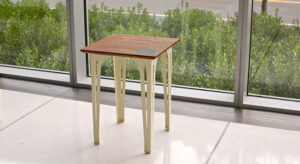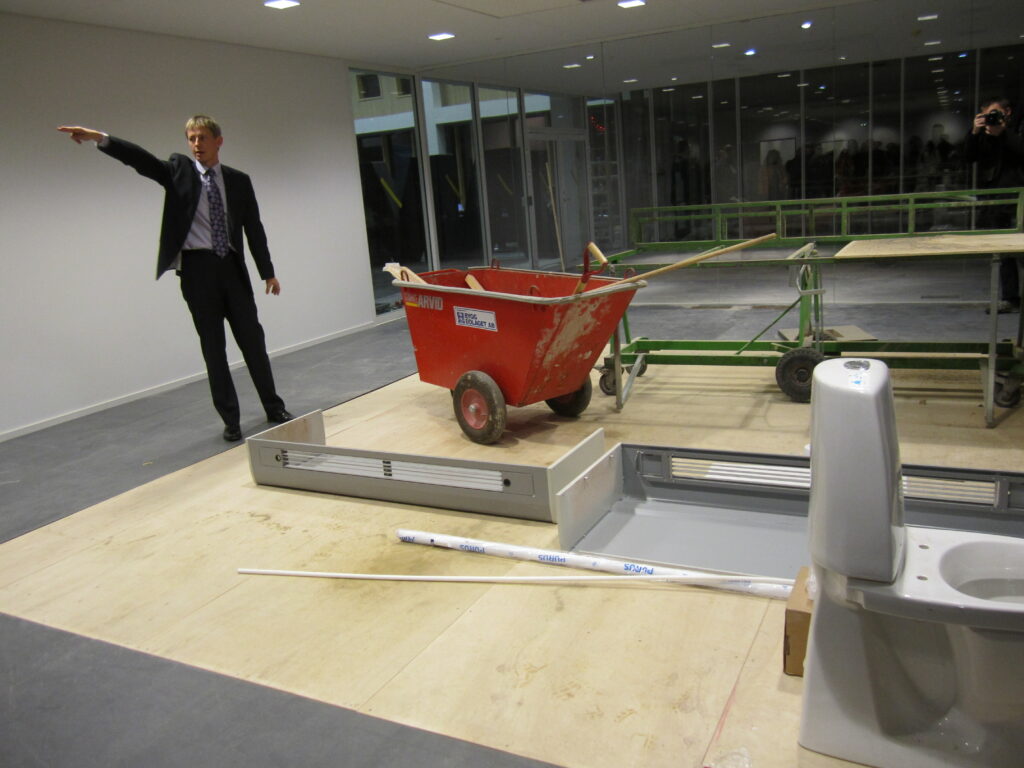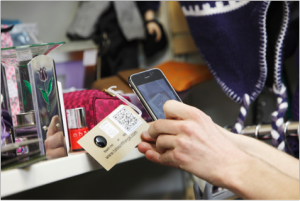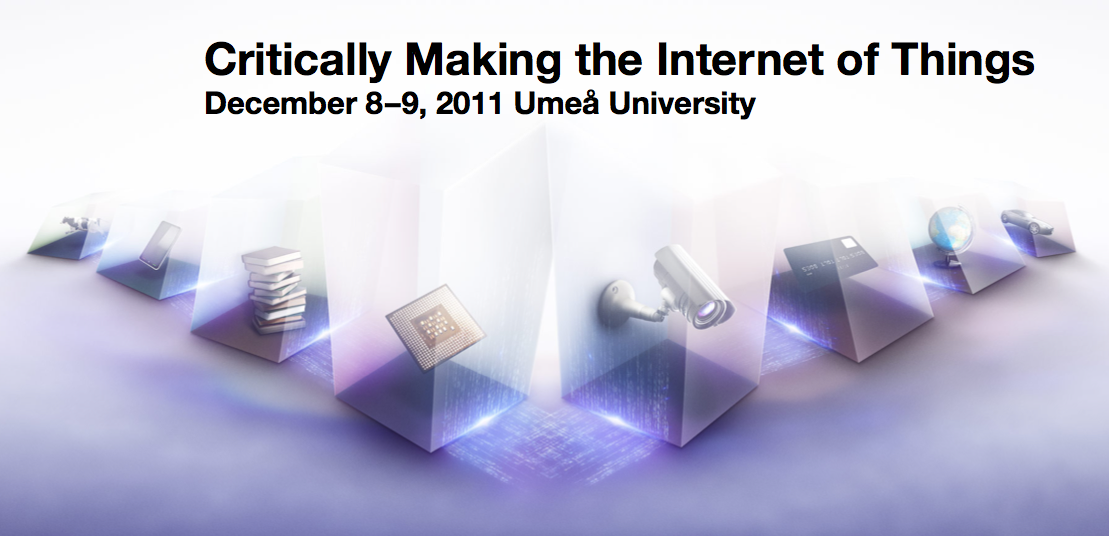I’m still inspired by the international conference we had last week at HUMlab: Critically making the internet of things. That’s why I’d like to share some of my personal highlights in this post.
First, and not surprisingly, it was exciting to see Bruce Sterling speak. He is a highly entertaining speaker and directed our attention to a number of cool projects, e.g. the “rev–> table” (by John Kestner’s company Supermechanical), “which rejects the modern model of hard goods consumption by empowering the owner to become the manufacturer” according to the website Cool Hunting, or Nelly Ben Hayoun’s “domestic volcano“.
 © photo credit: coolhunting.com
© photo credit: coolhunting.com
In the afternoon Molly Steenson talked about the fascinating history of pneumatic tubes, which physically transferred documents in the cities of the 1800s. Finn Arne Jørgensen made us aware of the increasing role tracking technologies play in hunting, or the “internet of dogs”. Nanna Gyldholm showed us wonderful pieces of architecture imagined & created by BIG, Copenhagen, Jennie Olofsson spoke about hacked road signs & zombie warnings, and Tim Hutchings ended day 1 with an interesting talk on the digital bible and bible apps (amazing what the internet has to offer to religious people!!!). After that Patrik Svensson showed us the new HUMlab X space on the Arts Campus and the upcoming floorscreen underneath the stuff you see in the pic below:
On day 2 I was particularly impressed by Johanna Drucker’s talk on augmented subjects, digital aesthetics and the role of the researcher as part of contemporary (digital) culture (and corporations as responding to desire and thus also being part of our culture).
Further, Chris Speed spoke about his really cool project “tales of things“, which loads second-hand clothes and objects with stories from previous owners with the help of QR codes. Stephanie Hendrick shared her interesting research on “PostSecret Postcards“, an online art project where people mail in their secrets anonymously on postcards that get published every sunday.
© photo credit: fields.eca.ac.uk
Finally, Anne Galloway provided us with insights in her research on sheep farming, locative media, and the way technology, practices and culture are interwoven (she also showed beautiful images from New Zealand!).
After the conference, the legendary Glögg party took place at Patrik’s house, a fun way to end this wonderful and well-organized event (thanks to Emma Ewadotter!). We also had a tasty Julbord, the traditional Swedish Christmas buffet. All these activities felt like the first taste of farewell, which made me aware that I’ll be leaving Sweden and HUMlab soon.. (with mixed feelings!)



